Growing orchids in water is an original modern method that allows you to get a beautiful flowering plant that requires minimal care. Many do not use this method due to ignorance of the rules or disbelief in its feasibility. So, let’s talk about how to grow orchids in the water.
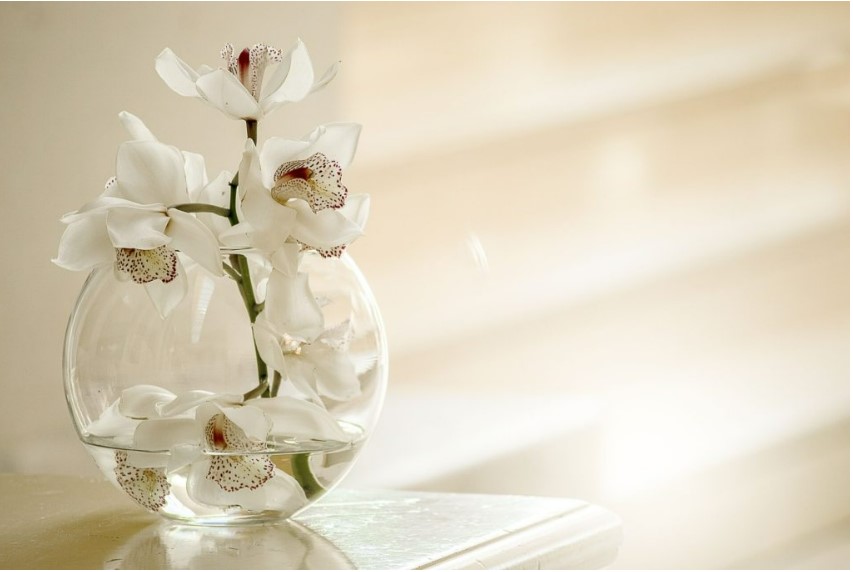
How to grow orchids in water and why it is a better method of planting and growing orchids?
This tropical bright and beautiful water culture in the wild does not grow on the soil.
But clings to the bark of the trunk and tree branches in the forest.
They receive useful and necessary substances through “air” roots, which consume water from the air, fog, and rain.
It is quite difficult to provide such tropical natural habitat with high humidity in an apartment.
The solution may be the hydroponics method, although many orchid growers still doubt it and ask if the orchid can be kept in water.
The main ways of growing phalaenopsis orchid are varied. And not all of them involve the use of soil:
- in a special soil mixture;
- using inert substrates (hydroculture);
- location in the air (aeroponics);
- hydroponics – growing orchids at home in the water.
When using the latter method, it should be borne in mind that when the aerial roots are completely covered with water.
The water culture loses the ability to breathe, and therefore it is susceptible to fungal attack, as a result of which the process of decay begins.
Therefore, some flower growers recommend maintaining the water level within the zone of the outlet, from where the orchid roots begin to grow.
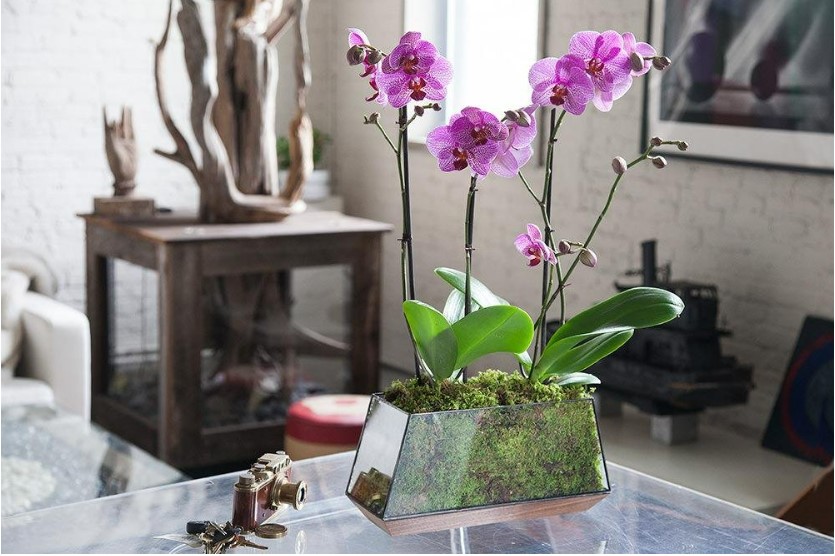
Delicate flowers suitable for growing hydroponically
Will orchids grow roots in water?
The number of semi-water culture species is very large, but not all of them are suitable for growing orchids in water.
Phalaenopsis orchids and other home varieties feel best in hydroponics.
Plants that do not have a dormant period are suitable for transfer to water cultivation:
- Fragmipedium originates from the mountain tropics.
- Dendrobium growing in nature in a cool microclimate.
- Cattleya – characterized by large flowers (20 cm), loves warm, but not hot conditions.
- Mormodes, have spots and dots on the sepals and petals.
- Zygopetalum – differs in 2- and 3-color petals, etc.
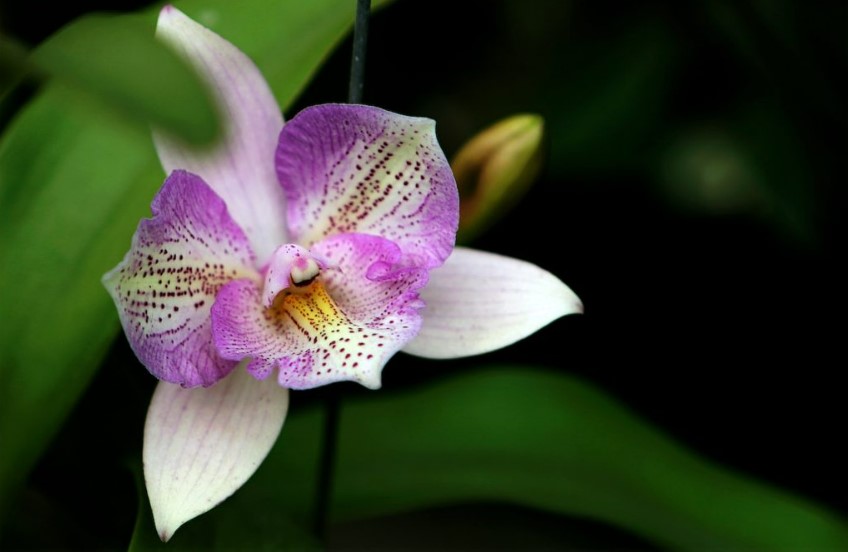
How do you grow phalaenopsis orchids without soil? Preparing for planting
When growing orchids in water, it is best to use a transparent pot, and a glass container is not suitable for this because the glass vases are too cold, and it is impossible to make the necessary holes for air to enter.
Therefore, plastic containers that are sold in flower shops are considered optimal.
As a home option, you can take a transparent plastic bucket and hide its unsightly appearance inside a decorative planter.
Be sure to make holes for air circulation at the level of ¼ height with a diameter of 5-6 mm. Make 3 such holes with a screwdriver or a hot soldering iron.
As a substrate, only substances that are not susceptible to decay can be placed in a container: foam plastic, clay pebbles, pine bark, perlite, expanded clay, sphagnum moss, green mix (mineral wool with perlite), diatomite.
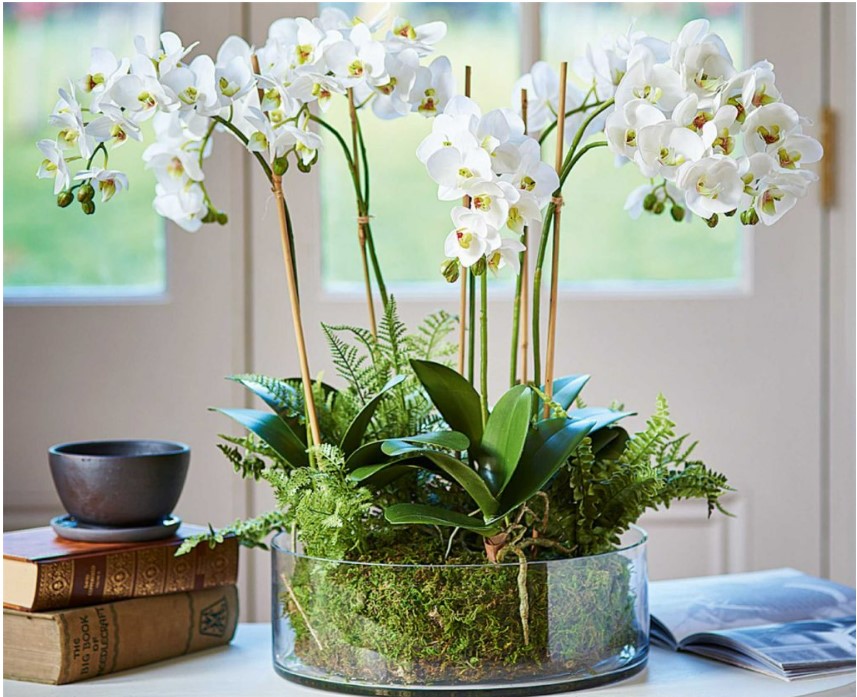
How to transfer an orchid from soil to water?
To prepare a plant to start growing in an aquatic environment, it is necessary gradually, follow some rules:
- remove the water culture from the soil, clean the roots of adhering particles;
- immerse for 2 days in water 1/3 of the length of the root system, then pour it out and let it dry (leave the liquid 1 cm deep);
- after a week, the time spent in the aquatic environment is increased to 5 days, giving a day for a respite (drying);
- then keep the root system of the orchid in the water constantly, replacing them and washing them periodically;
- the need for water becomes noticeable by the color of the roots – they become silvery.
During this period, the active growth of aerial roots begins, and light green sprouts appear on the old ones.
If mold or white plaque appears, the water culture must be removed from the water for a day, then washed with hydrogen peroxide or any fungicidal agent.
Orchid growers say, that green algae that have appeared on the roots don’t need to remove since they help improve the air exchange of the plant.
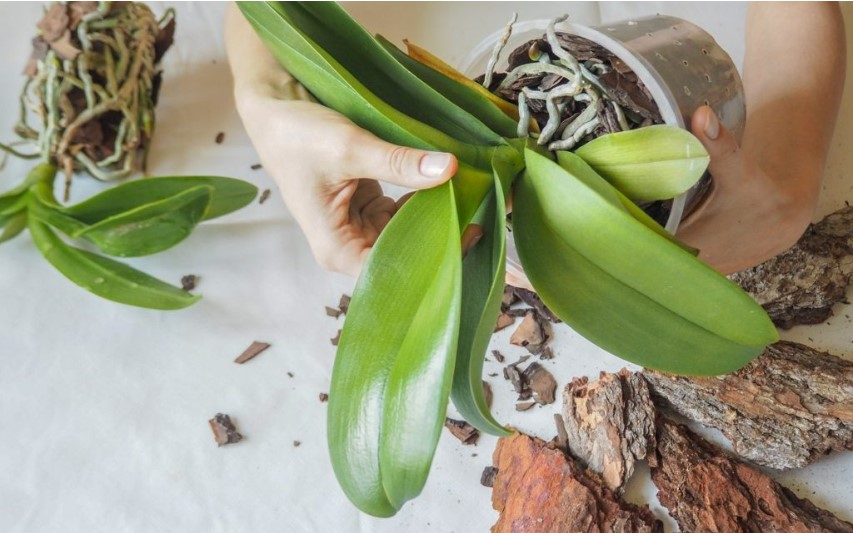
Can orchids be grown in water and how? The process of planting a flower in water
Landing is done in several stages:
- clean the water culture from the remnants of the soil;

- pour the substrate into the pot to the level of the holes made in the walls;
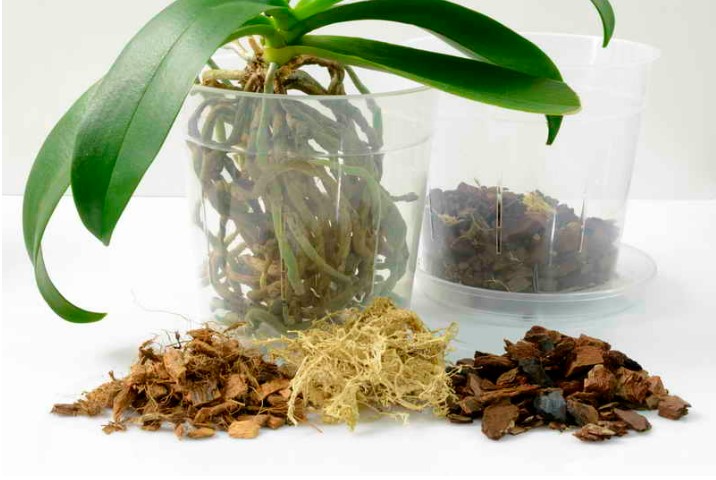
- put the semi-water culture and straighten the roots;
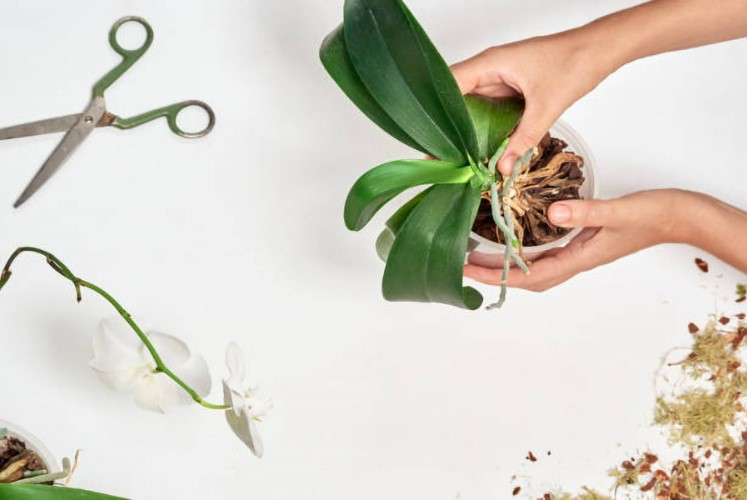
- pour a solution of nutrients (bought in a store depending on the period of development: rooting, flowering, etc.);
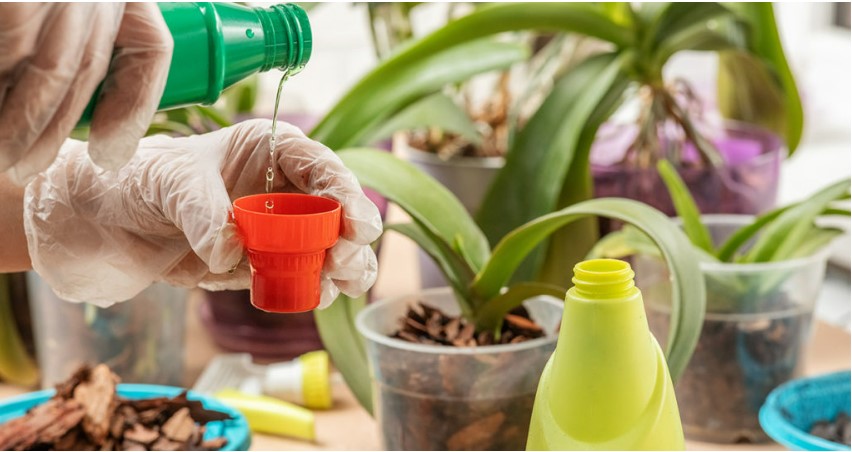
- top up the substrate to a level of 1.5 cm from the holes in the container.
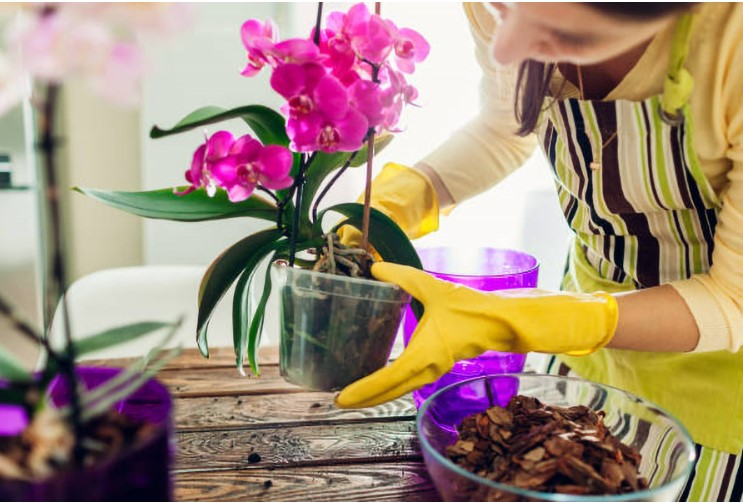
The amount of substrate can be adjusted depending on its type:
- expanded clay is filled up to the middle, the semi-water culture is placed, then filled up to the top;
- when using perlite, first put a layer of expanded clay on the bottom, then the plant, and add perlite to a level of 1 cm from the holes, for compaction, the substrate must be immersed in water;
- diatomite also alternates with expanded clay (bottom and top) and is filled up to the beginning of the holes;
- the green mix and sphagnum moss must first be filled up, spilled with water into the holes, then pour the nutrient mixture.
How long should water orchids sit in water? The plant can initially be kept in water for 5 days, after which it needs to be dried a little and the water changed. Then they are constantly kept in water, changing it once a week and washing the pot and roots.
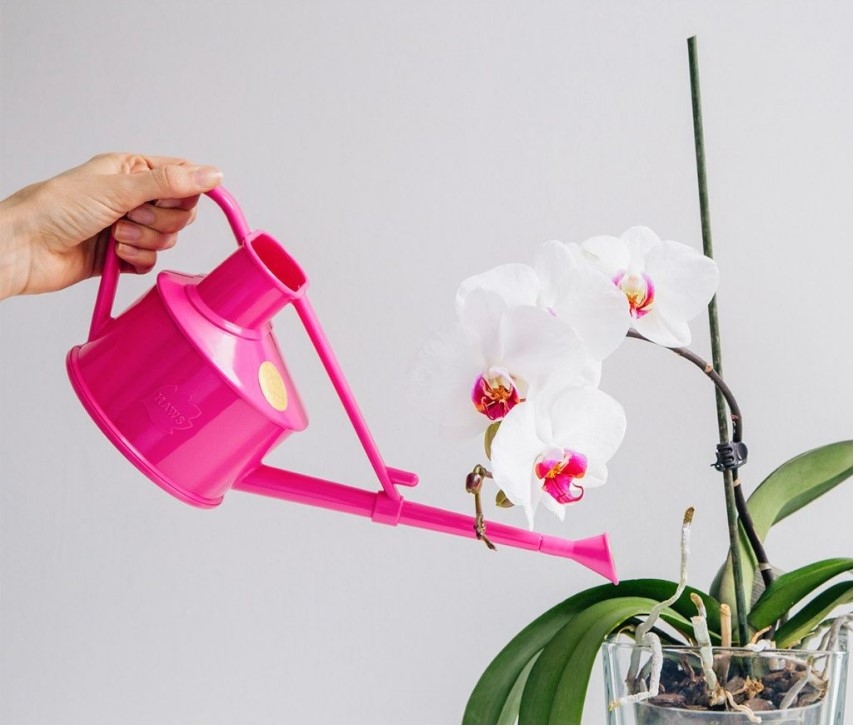
Rules for caring for a water culture
Regular monitoring of the water level is the main rule for the water culture method and orchid care, and other recommendations must also be observed:
- the air temperature in the room in winter should not exceed 77 °F;
- to form flower buds, a preparatory period of 2 weeks is necessary with a temperature below 59 °F;
- the optimum air humidity is 60-75%, which is especially important during the formation of rosettes, which are favored by growing in water because the evaporated moisture increases the air humidity around the water culture;
- a container with a water culture should be placed in a place away from drafts, in the summer – it is put on the balcony so that direct sunlight does not fall (too much sunlight is useless because burns are possible);
- water for topping up is used as either rainwater or filtered through charcoal for softness (irrigation temperature 73 °F);
You need to make sure that the leaves of the epiphytic orchids do not touch the water (rotting is possible), and when watering, the dropped drops are removed with a paper napkin or sponge.
Openings in pots must be periodically inspected and cleaned.
Replacement of the solution should be done every 3 days.
The pot is washed monthly, while the roots of the orchid water culture are wiped and dried for 6 minutes, then again immersed in a fresh solution.

Possible problems and pests
When grown hydroponically, dendrobium orchids are more susceptible to attack by flying pests, whose larvae can damage the green parts of the water culture by feeding on their sap.
When a whitefly butterfly appears, the leaves should be treated with a soap solution prepared in a ratio of 1:6.
With a noticeable wrinkling of the leaves of the water culture, the likely cause may be the action of hot or dry air in the room, and temperature differences between day and night, which the water culture orchid does not like.
In a situation where there is no flowering with active leaf and root growth.
It is recommended to stimulate the plant with a temperature jump of 46 °F between day and night conditions.
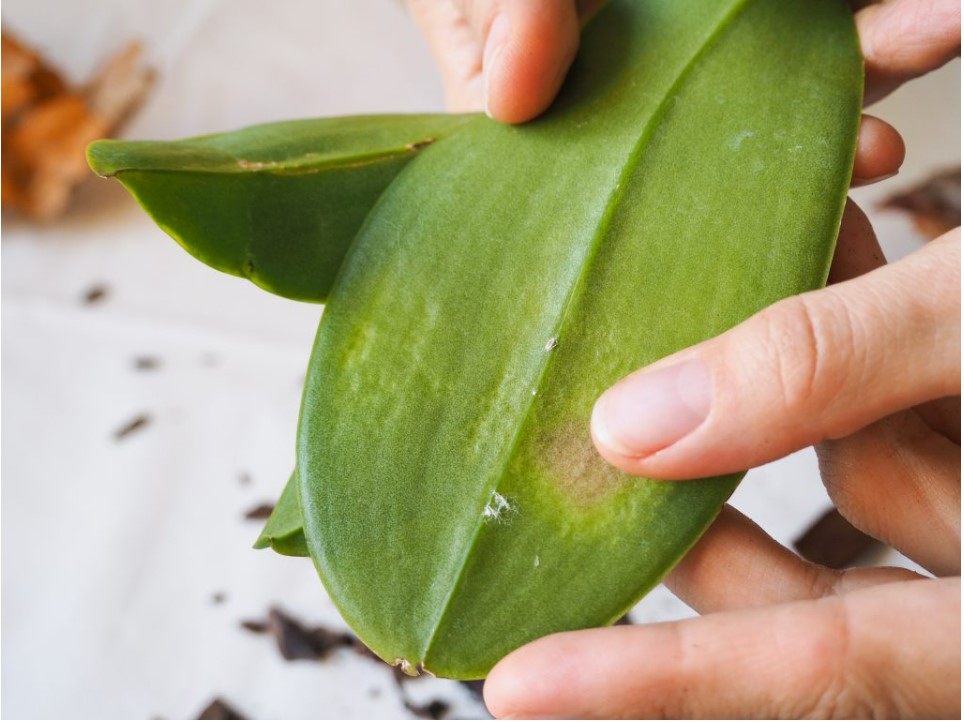
Advantages and disadvantages of water hydroponics
Advantages
Keeping an orchid water culture in water has its advantages:
- there are no soil parasites, and the likelihood of root rot is reduced, which is hindered by the exchange and circulation of fluid and air;
- regular transplant is not required;
- the plant does not feel a lack or excess of fertilizers;
- the phalaenopsis roots do not dry out and do not suffer from a lack of oxygen;
- nutrient mixtures added to the water have a beneficial effect on the health of the flower.
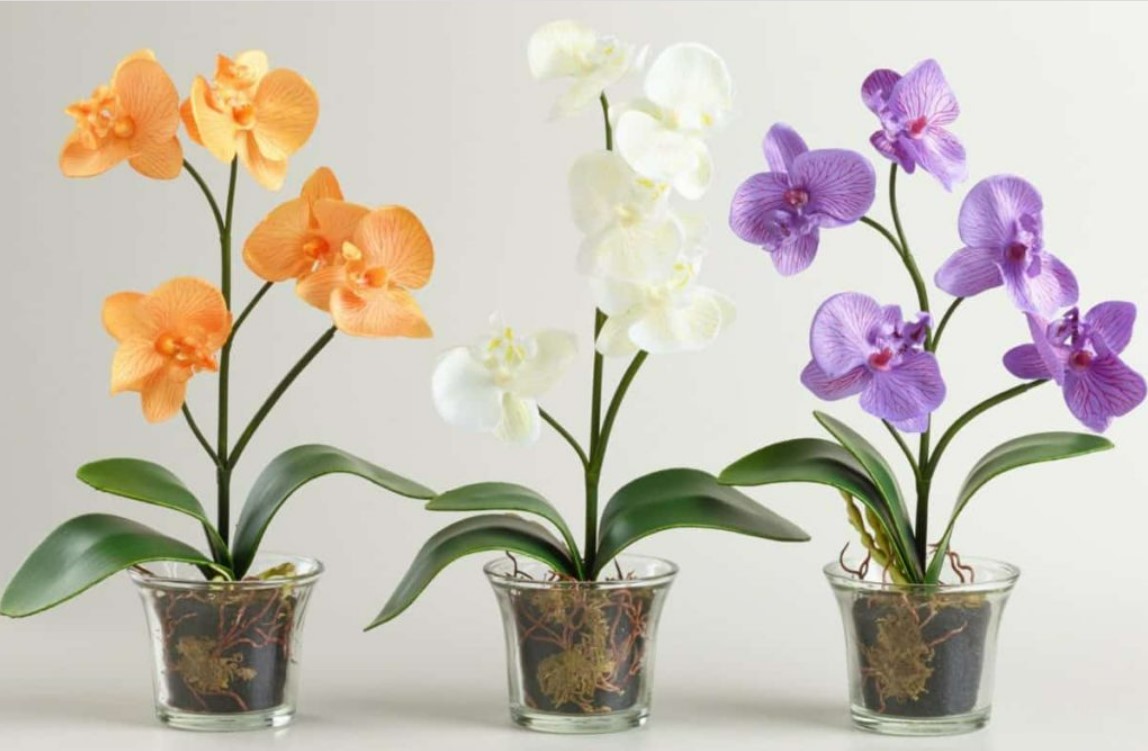
Disadvantages
Disadvantages of the hydroponics method:
- water is used only filtered, and it should always be cool;
- it is necessary to constantly monitor the level of liquid in the pot so that it does not fall below the roots;
- top dressing occurs throughout all periods of flower growth.

Resuscitation of epiphytic orchids in water
The hydroponics method can also be used to save a plant that has lost its roots.
This happens for various reasons: from overflow and decay, as a result of infection, the action of pests, etc.
It is a pity to throw away the affected plant. After all, you can try to save him.
You can grow roots with water and a special rooting method:
- clean the roots of rot and dried particles with a disinfected knife;
- treat the neck with a fungicide, sprinkle the cut places with activated charcoal;
- dry the plant well overnight so that all wounds heal;
- pour settled water into the jar, put the flower on top with the neck down so that there is a distance of 1-2 cm to the surface (you can not touch the water outlet);
- put the jar with the orchid in a warm place, and the water must be changed every week;
You must daily wipe the leaves with a solution of succinic acid because from a lack of moisture they will become lethargic and wrinkled;
After a month of careful care, the first roots and even fresh leaves may appear, depending on the condition of the flower.
Such resuscitation of an orchid without roots in water will help save the affected plant, giving it a new life.
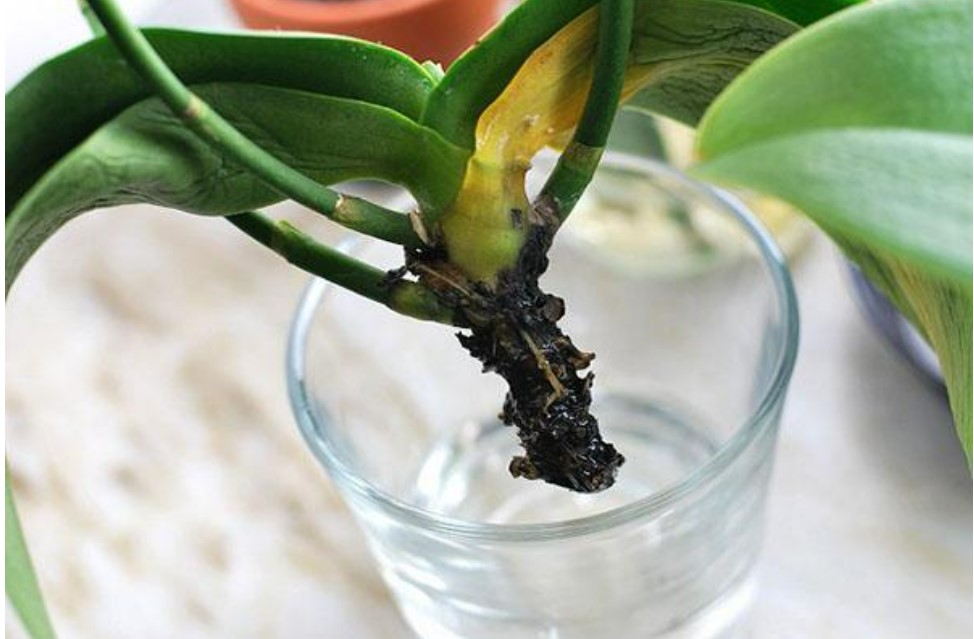
Conclusion
Now you know about growing orchids in water.Often, many beginner gardeners have a question: can orchids be grown in water? As you can see, it is not at all difficult to grow orchid species in water. Of course, not all types of plants are suitable for this.
But the considered flower options will be enough to create a beautiful garden in the house with your own hands.
It is very important to regularly care for plants in the water and make sure that they are not affected by pests and do not get sick. For orchids to attract the attention and delight of your guests, as well as delight you, regularly monitor the temperature and humidity of the air, which are very important for the health and growth of the plant.
Have you tried growing orchids in the water yet? Share with us your impressions and useful tips.
Read also:
How long do you keep orchids in water?
Orchids should not be kept in water for long periods of time, as this can lead to root rot. It is recommended to water orchids thoroughly, allowing excess water to drain away, then allowing the growing medium to dry out slightly before watering again.
Can orchids grow without soil?
Yes, orchids can grow without soil, but they need a suitable growing medium such as bark, sphagnum moss, or coconut coir to anchor their roots and provide moisture and nutrients.
How do you take care of orchids in water culture?
1. Use a clear container and fill it with water.
2. Add a nutrient solution to the water to provide the orchid with essential nutrients.
3. Place the orchid in the container so that its roots are submerged in the water but not the foliage.
4. Keep the water at room temperature and change it every 2 weeks to prevent bacterial growth.
5. Monitor the water level regularly and add more as needed to keep the roots submerged.
6. Provide bright, indirect light and a warm environment for the orchid to thrive.
Do orchids like sitting in water?
No, orchids do not like sitting in water. They prefer a well-draining growing medium that stays moist but not soaking wet. Sitting in water can lead to root rot and kill the plant.
